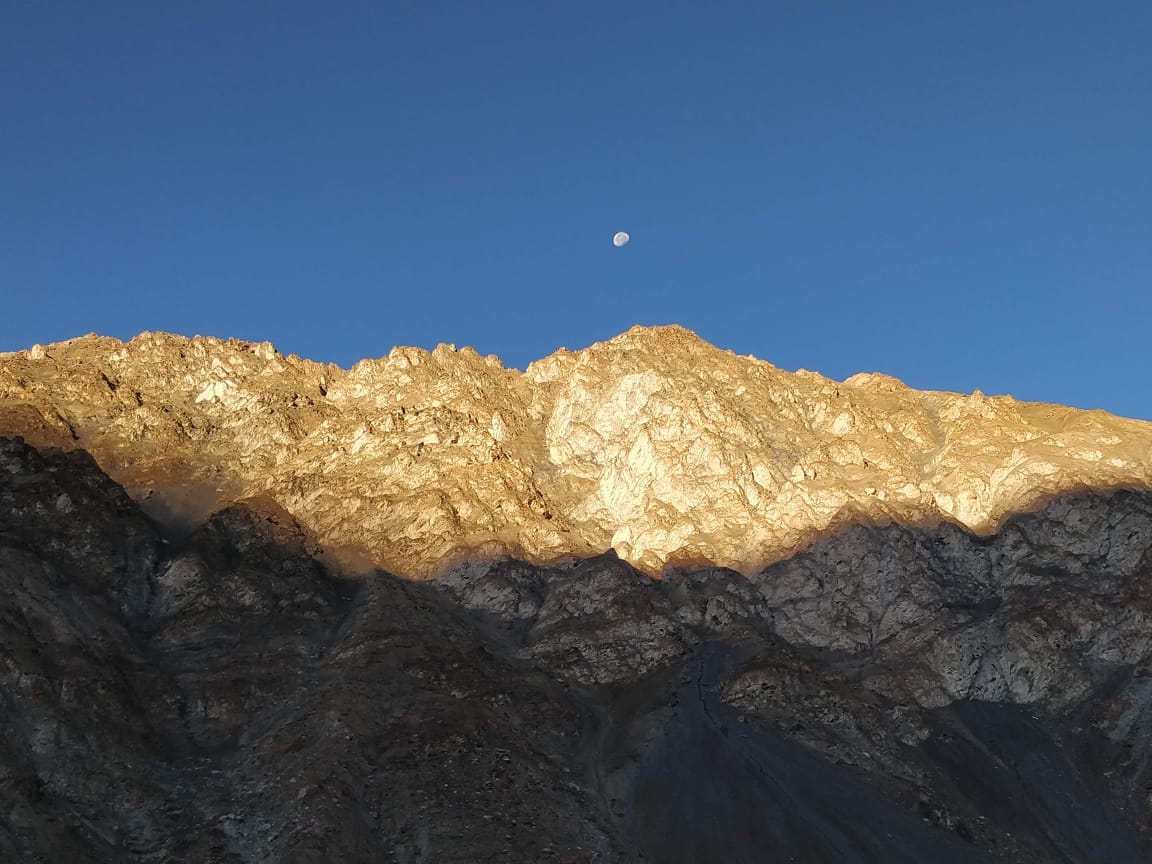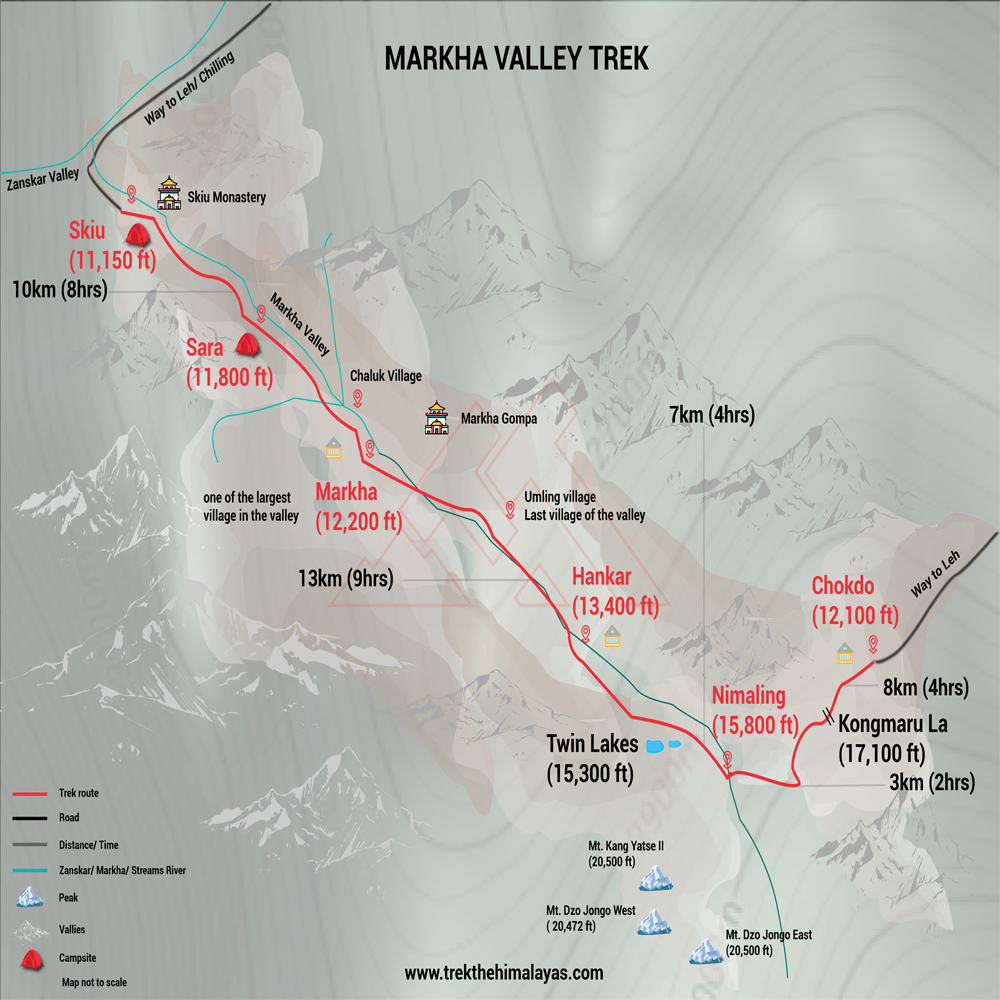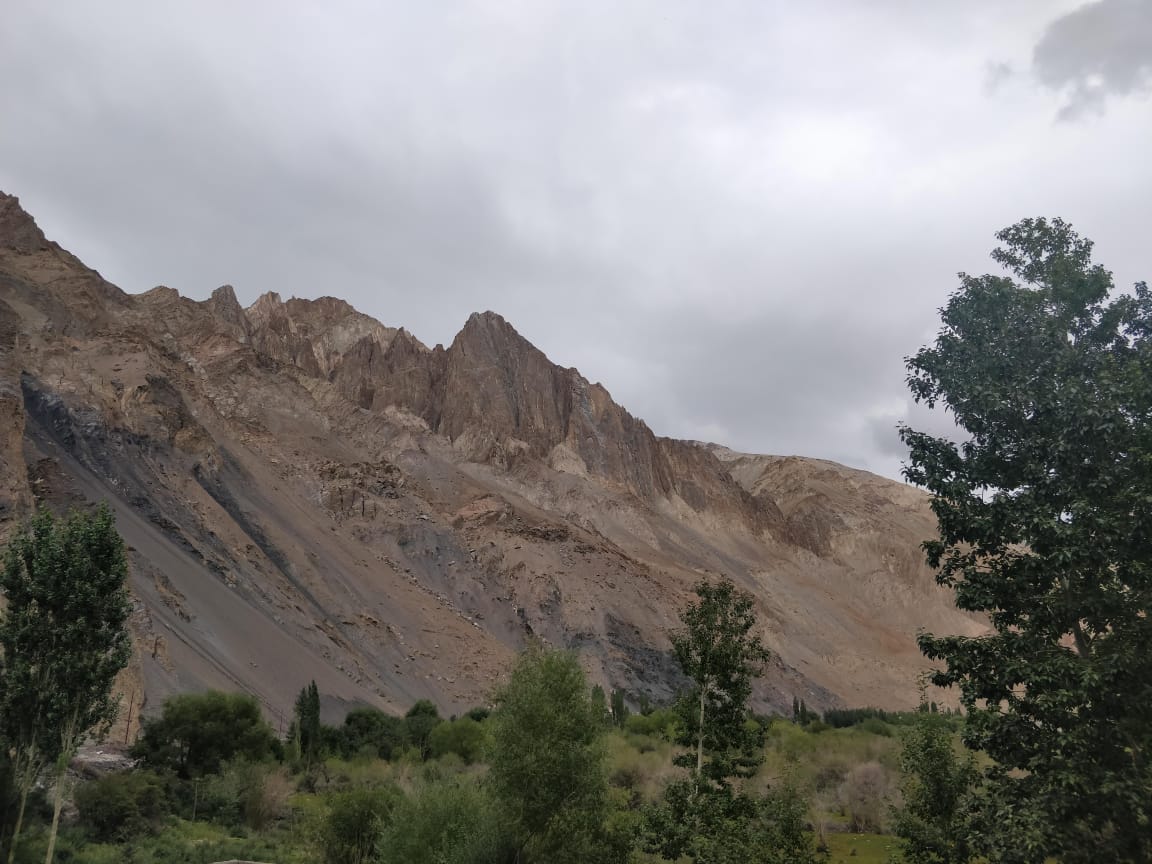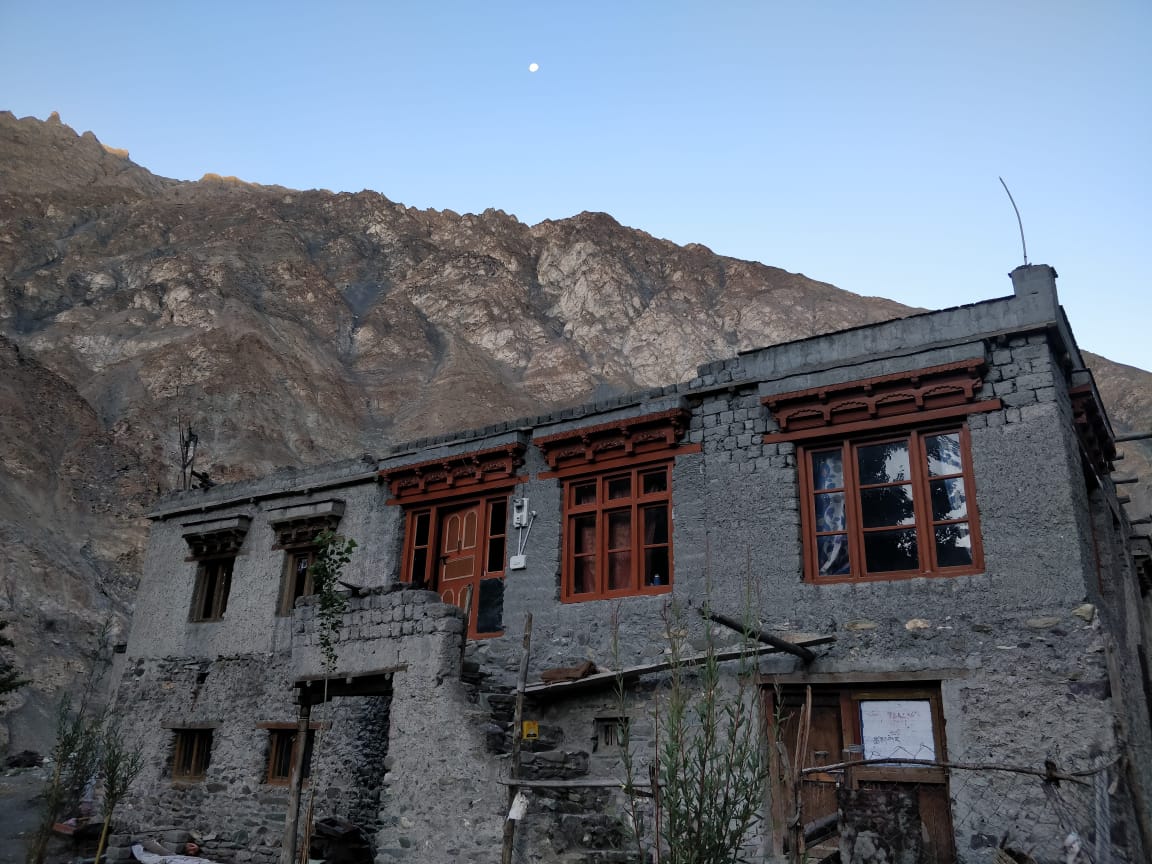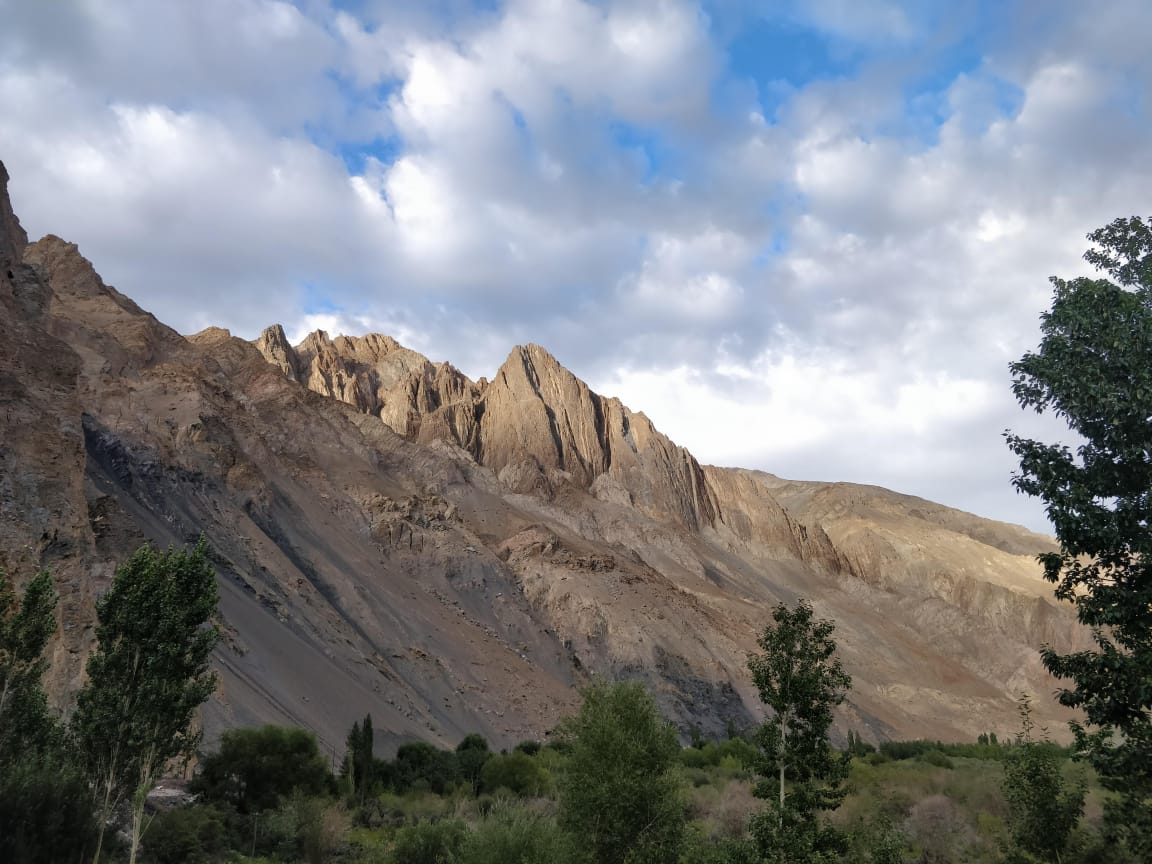Altitude: 11,560 ft – 10,490 ft – 11,160 ft
Distance: 60 km drive, 7 km trek
Duration: 2 hours drive, 2-3 hours trek
Chilling is the point where Markha river drains into the mighty Zanskar river. It is also the nearest road head for starting the trek.
If you are in a group hiring a taxi would be your best bet (Rs. 3000) since buses from Leh to Chilling run only twice a week. You can also try to get a seat on one of the vehicles heading to Chilling. Many tempo travellers take tourists to Chilling for Rafting tours, if you are lucky you should be able to buy a seat or two by getting in touch with a travel agent.
Once at Chilling, begin by crossing the Zanskar river using the trolley bridge. Crossing the mighty river sitting on the trolley is a fun way to kick things off. Recently a bridge has been constructed here so that is another option for crossing the river.
After crossing the river, take a right turn. This is actually a motorable road that continues for a few kilometers. Just as you start you will notice a path that deviates from the road and climbs up. Feel free to take this path to skip the rather monotonous walk along the road.
The initial part of the trail involves a steep climb for about half an hour and you might struggle a bit because of the altitude. But the tough part of today’s trek is over. The trail joins the road from here and flattens out.
From here it is a relatively flat walk above the Markha river all the way to Skiu. En route, you will pass the village of Kaya after another 3 km. There are homestays in this village as well so you can rest here for the night, though it will make the next day very long.
Skiu is another 3 km ahead of Kaya. It is a nice village nestled between huge rocky mountains. There are homestays here, as well as camping grounds. It is not advisable to go ahead as the next village is quite far away. Get some good rest tonight to prepare for tomorrow’s long walk.

